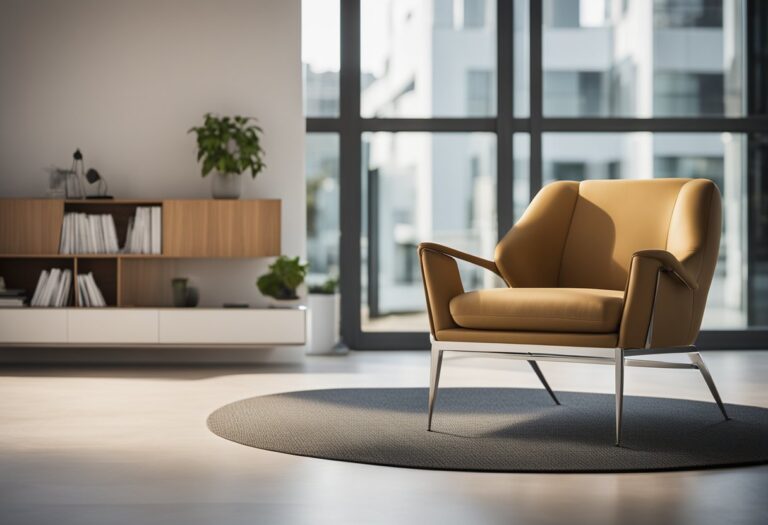As the world’s population ages, there is an increasing need for furniture that is specifically designed for senior citizens. Age-adaptive designs are becoming more popular as people look for ways to make their homes safer and more comfortable for their elderly loved ones. These designs take into account the physical limitations that come with aging and aim to provide furniture that is both functional and stylish.
Age-adaptive furniture is designed to meet the needs of senior citizens by providing features that make it easier for them to sit, stand, and move around. These features can include higher seat heights, wider armrests, and more supportive backrests. Additionally, age-adaptive furniture is often designed to be more stable and secure, which can help prevent falls and other accidents. With the right age-adaptive furniture, senior citizens can maintain their independence and enjoy a higher quality of life.
Understanding Age-Adaptive Design
Age-adaptive furniture is designed to cater to the unique needs and requirements of senior citizens. It is a growing trend in the furniture industry, with more and more designers and manufacturers focusing on creating products that are not only aesthetically pleasing but also functional and comfortable for older adults.
Principles of Age-Adaptive Furniture
Age-adaptive furniture is designed with the principles of universal design in mind. This means that it is created to be used by people of all ages and abilities. The furniture is designed to be flexible, adjustable, and customizable to fit the specific needs of each user. It is also created with the intention of promoting independence and reducing the risk of injury or accidents.
Ergonomics and Comfort
One of the primary goals of age-adaptive furniture is to provide maximum comfort and support to the user. This is achieved through the use of ergonomic design principles, which ensure that the furniture is designed to fit the human body. Ergonomic furniture is designed to reduce strain on the body, promote good posture, and prevent discomfort and pain.
Safety and Accessibility
Safety and accessibility are two critical factors that must be considered when designing age-adaptive furniture. The furniture must be designed to reduce the risk of falls and injuries, and it should be easy to use and access. This means that the furniture should be designed with features such as non-slip surfaces, easy-to-reach controls, and sturdy construction.
In summary, age-adaptive furniture is designed to cater to the unique needs of senior citizens. It is created with the principles of universal design in mind, with a focus on ergonomics, comfort, safety, and accessibility. As the population continues to age, the demand for age-adaptive furniture is likely to increase, making it an essential part of the furniture industry’s future.
Innovations in Age-Adaptive Furniture
As the population ages, there is a growing need for furniture that can adapt to the changing needs of seniors. Age-adaptive furniture is designed to provide comfort, safety, and convenience to seniors, without sacrificing style or functionality. In recent years, there have been several innovations in age-adaptive furniture that have made it more accessible and user-friendly.
Smart Furniture Technologies
One of the most significant innovations in age-adaptive furniture is the integration of smart technologies. Smart furniture can help seniors to stay connected, monitor their health, and control their environment. For example, a smart bed can adjust its position to provide better support and comfort, while a smart chair can sense when someone is sitting down and adjust its height and angle accordingly. Smart furniture can also be programmed to remind seniors to take their medication, drink water, or exercise.
Modular Design Solutions
Modular design is another innovation in age-adaptive furniture that allows for customization and flexibility. Modular furniture can be easily reconfigured to meet changing needs, and it can be adapted to fit different spaces and styles. For example, a modular sofa can be rearranged to provide more seating or a larger sleeping surface. Modular furniture can also be designed to be lightweight and easy to move, making it ideal for seniors who may need to relocate or downsize.
Materials and Sustainability
Finally, there has been a growing focus on using sustainable materials in age-adaptive furniture. Sustainable materials are not only better for the environment, but they can also be safer and more durable. For example, furniture made from bamboo or cork is lightweight, strong, and renewable. Furniture made from recycled materials is also becoming more popular, as it reduces waste and conserves resources. Additionally, furniture designers are incorporating ergonomic principles into their designs, which can help to prevent injuries and improve overall comfort.
In conclusion, age-adaptive furniture is an important and growing market that is driving innovation in the furniture industry. With the integration of smart technologies, modular design solutions, and sustainable materials, furniture designers are creating products that are safer, more comfortable, and more accessible for seniors.






